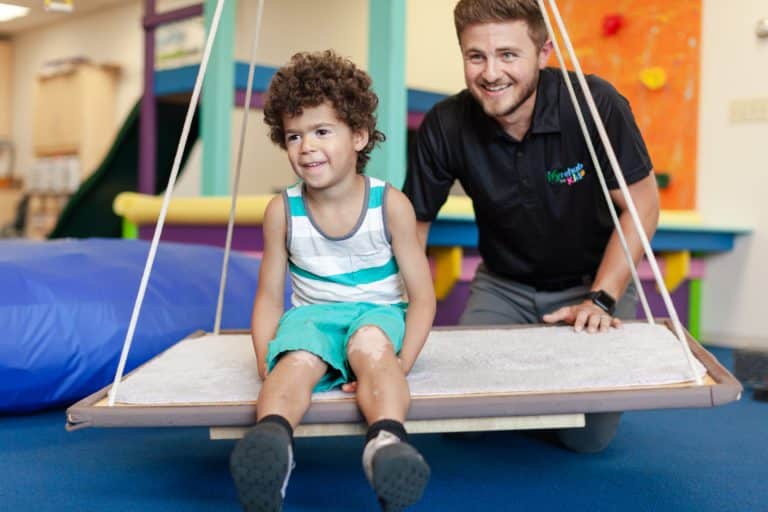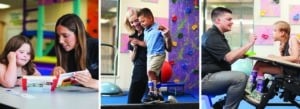
Developmental Milestones in Childhood – Why Are They So Important?
Parents often wonder if their child is developing like others their age and may find themselves comparing their child to friends, siblings, or cousins. How can parents really know if their child is on track? What does it mean if they seem to be “behind” other children? The Centers for Disease Control (CDC) introduced a program in 2004 called “Learn the Signs. Act Early” to outline what healthy development looks like and provide resources if parents have concerns that their child may not be meeting milestones. These documents described behaviors that 50% of children were performing at that particular age. While they provided a general idea of what around half of the children could achieve, it did not necessarily mean your child is “behind” if they were not quite there yet.
What’s new for 2022?
Last week, the CDC updated their developmental milestones checklists for the first time since their initial launch in 2004. The current version now includes milestones that 75% of children are able to do at that specific age, which allows for easier identification of developmental delays. For example, at 4 months of age, an infant should make sounds back when you talk to them and hold their head steady without support. At 2 ½ years of age, most children can begin to unbutton their own coat and jump with two feet. If your child isn’t meeting a majority of the milestones listed, it’s a good idea to talk to your doctor about further developmental testing.
Why is Early Intervention Important?
1 in 6 children ages 3-17 have a developmental disability, and the first 5 years of life are critical to a child’s future development. Early intervention, before starting school, can have a big impact on how the child learns new skills and can reduce the need for costly interventions later on.1 (CDC)
- The earlier intervention is provided, the more likely it is to be effective2
- The connections in a baby’s brain are most adaptable in the first 3 years of life and become harder to change later in life2
- Families are better able to meet their children’s needs after early intervention2
What Can I Do If I Have Concerns?
The American Academy of Pediatrics (AAP) recommends children be screened with a standardized developmental screening tool at 9, 18, and 24 or 30 months of age. These screenings can be completed in a childcare setting, pediatrician’s office, or other pediatric care facilities.
Here at Ivy Rehab for Kids, we provide developmental screenings at any age, especially if you have concerns regarding your child’s development. A pediatric specialist will listen to your concerns, and provide a short screening based on your child’s age and expected milestones. We will discuss the findings with you and recommend therapeutic treatment, if indicated. We will then partner with your child’s primary care provider to discuss the results and next steps if your child is at risk for delays.
To request a free developmental screen online click here or give us a call to schedule by phone.
How Can Pediatric Therapy Help?

Occupational Therapy
Pediatric Occupational Therapists work to improve a child’s physical development, fine motor skills, sensory processing skills, social-emotional development, cognition, feeding skills, and visual processing abilities to maximize skills of daily living.
Physical Therapy
Pediatric Physical Therapists work to improve a child’s gross motor ability, which improves overall mobility, coordination, and balance. We offer specialty services to address motor planning, coordination and balance training, gait training, and mobility interventions to address neuromuscular, orthopedic, and musculoskeletal conditions.
Speech Therapy
Pediatric Speech-Language Pathologists have extensive experience working with children to improve feeding, swallowing, communication, articulation, voice, fluency, and cognitive function. Individualized approaches to treatment include addressing the following areas: articulation and phonological disorders, expressive delay, language disorders, feeding and swallowing disorders, picky eaters, selective mutism, stuttering, pre-literacy, and literacy skills, augmentative communication device training, auditory processing disorders, voice disorders, and social/pragmatic language disorders.
Resources:
- Learn the Signs. Act Early. Accessed February 14, 2022
- The Importance of Early Intervention for Infants and Toddlers with Disabilities and Their Families. Accessed February 14, 2022.
- How do I get help if I am concerned? CDC’s Tip Sheet
Article Written by Sarah Goncalves PT, DPT, PhD(c), PCS, CI
Sarah Goncalves PT, DPT, PhD(c), PCS, CI is the Director of Pediatric Education and Residency at Ivy Rehab for Kids. Sarah is a board-certified specialist in pediatric physical therapy and has been practicing for over 10 years in the pediatric population. She is currently conducting research related to idiopathic toe walking and activity participation in children at the University of Michigan – Flint.
The medical information contained herein is provided as an information resource only, and does not substitute professional medical advice or consultation with healthcare professionals. This information is not intended to be patient education, does not create any patient-provider relationship, and should not be used as a substitute for professional diagnosis, treatment or medical advice. Please consult with your healthcare provider before making any healthcare decisions or for guidance about a specific medical condition. If you think you have a medical emergency, call your doctor or 911 immediately. IvyRehab Network, Inc. disclaims any and all responsibility, and shall have no liability, for any damages, loss, injury or liability whatsoever suffered as a result of your reliance on the information contained herein.